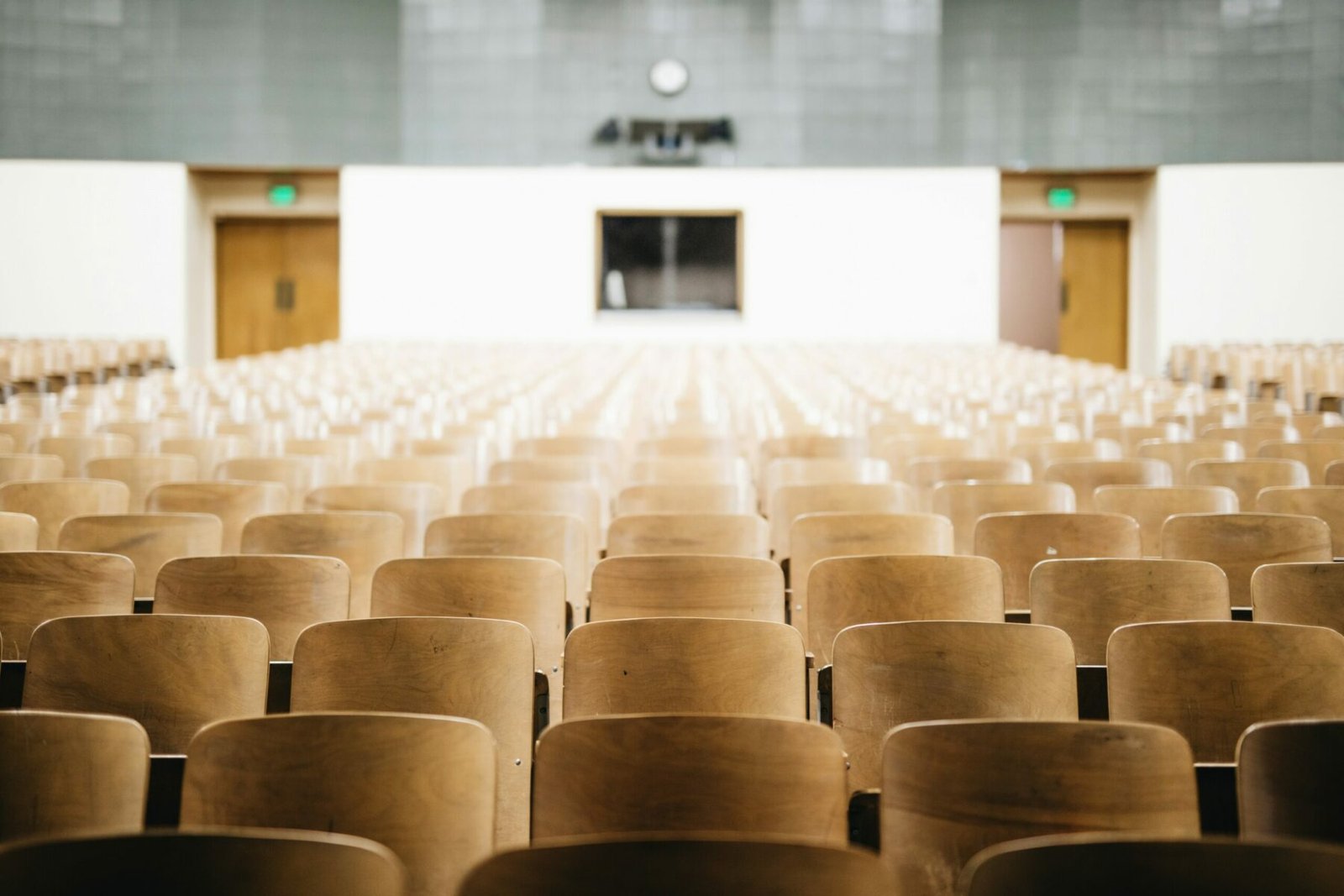Education has long been recognized as the great equalizer, a means through which we pass our knowledge, culture, and values to the next generation. But as we grow, so too does the understanding of what passes as an effective learning environment. One significant, yet often overlooked factor, is the school design in our educational facilities.
The way we design learning spaces not only affects the physical comfort but also the mental and emotional well-being of students and educators. In an age where the environment plays a vital role in our psychological health, it’s essential to consider how architectural choices in school design can elevate the learning experience. Below, we explore four key ways architects and educators can work together to create educational institutions that foster optimal learning.

1. Benefits of Natural Light in Schools
In the light of the sun, our predecessors gathered to learn, their grand lecture halls and libraries shaped from marble and wood, dappled with light. However, as education systems expanded, the cost and convenience of fluorescent lighting led to dim, sterile environments that inhibited student growth. Recent studies underscore the importance of natural light in schools, showing that it can positively influence student well-being and academic performance.
Designing for Daylight
Natural lighting has a profound effect on mood and productivity. In schools, it helps regulate the circadian rhythms of students and plays a crucial role in cognitive development. A school’s design should prioritize large, energy-efficient windows that allow natural light to flood in. More than mere illumination, these windows can connect students to the outside world, providing glimpses of nature, and allowing for a quick mental reset during intense study sessions.
When assessing school design, it’s not enough to have a few token panoramic windows. Architects must consider the entire building’s orientation to the sun, as well as seasonal and daily lighting variations. Light shelves and skylights can bring indirect light deeper into the interior, reducing the need for artificial illumination. The strategic placement of classrooms and learning spaces around these light sources can ensure an equitable distribution of natural light.
2. Strategically Placed Collaboration Spaces
Gone are the days of the lonely student, working alone in a dim cell-like room. Today, educational leaders recognize the importance of collaboration and social interaction in the learning process. Within the walls of a school, school design should be deliberate, and designed to encourage teamwork and group learning.
The Power of Proximity
Learning environments that foster collaboration aren’t just about open spaces; they are about creating a variety of spaces that cater to different group sizes and learning styles. From informal breakout areas to structured collaborative rooms, every square foot should be a potential learning asset. These spaces should be strategically located to encourage flow and connectivity, ensuring that students can work together without barriers.
Balancing Act
While flexibility is key to modern learning spaces, it’s also important to balance open collaboration areas with quieter, focused study spots. Divisible classrooms with movable walls or curtains can provide a perfect balance, allowing teachers to adapt the space to the needs of the lesson without sacrificing the benefits of natural light and a contiguous learning environment.
This balance between interaction and introspection allows students to develop a well-rounded set of skills, accommodating various learning styles and preferences.
Students benefit immensely from the versatility of learning spaces that cater to both collaborative and solitary learning needs. For instance, in collaborative zones, students engaging in group projects can brainstorm and share ideas freely, fostering creativity and problem-solving skills. These interactions not only enhance their social skills but also prepare them for the teamwork required in professional settings.
Conversely, in quiet study areas, students can focus on individual tasks without distractions, which is particularly beneficial for deep-concentration work or when processing complex information. These diverse spaces empower students to take control of their learning process, choosing environments that best suit their current educational needs.

3. Incorporating Technology into Design
The rapid evolution of technology has opened up new worlds in education. From interactive whiteboards to virtual classrooms, the integration of tech into the learning environment has the potential to vastly improve teaching methods and engage students in new and dynamic ways. But if not planned for during the design phase, these tools can become barriers to effective learning.
Nuts and Bolts of Connectivity
School architects must work closely with IT professionals to ensure that modern schools are not only structurally sound but also wired for the future. This means integrating robust Wi-Fi, ample power points, and the necessary cabling to support a multitude of devices.
Ceiling-mounted projectors, sound systems, and even charging stations should all be part of the initial blueprints, not an afterthought.
Technology in schools should never take precedence over human interaction. The design should allow for easy use and adaption, without creating a sterile or unwelcoming environment. Smart, subtle design choices can help ensure that the latest devices blend seamlessly into the learning landscape, providing support without becoming the focus.
Enhancing Human Connections Through Technology
In an intelligent school design, technology serves as an enabler, not just of individual learning, but of shared educational experiences that foster deeper human connections. From virtual field trips to collaborative research projects, technology can break down physical barriers and bring the world into the classroom, providing valuable learning opportunities that would otherwise be impossible.
Technology, when thoughtfully applied in educational settings, offers a multitude of benefits that extend beyond facilitating information access.
It fosters an inclusive environment where students with diverse learning styles and abilities can thrive. Adaptive learning software and applications cater to individual learning paces, ensuring every student finds a path that aligns with their strengths and addresses their weaknesses.
Catalyzing Personalized Learning
One of the most significant advantages of incorporating technology in education is the ability to personalize the learning experience for students. Educational apps and platforms can assess a student’s current knowledge state, adapt to their learning speed, and present material in a way that is most effective for them. Or, reading alongside an audiobook could help a student struggling to comprehend complex literature. Personalized learning makes all the difference. This personalization not only boosts student engagement but also increases retention rates and educational outcomes.
Expanding Educational Boundaries
Further, technology erases geographical and socio-economic barriers to education. Through the internet, students have the world at their fingertips. They can access vast online libraries, take courses from universities across the globe, and engage with peers from different cultures and backgrounds. This exposure not only enriches their learning experience but also prepares them for the interconnected world of the future.
Preparing Students for the Future
Integrating technology in schools does more than enhance learning; it prepares students for a future where digital literacy is key.
Familiarity with digital tools and platforms from a young age instills a comfort and fluency with technology that will be invaluable in virtually any career path. Furthermore, it encourages critical thinking and problem-solving, skills that machines cannot replicate and that will remain crucial in the workforce of tomorrow.
In summary, the thoughtful integration of technology into educational environments holds the promise of transforming how we teach and learn. It not only makes education more accessible and personalized but also prepares students for a future where adaptability and technological literacy will be paramount.
4. Inclusivity and Accessibility
A school is not just a place of education; it is a community and a second home to many. This inclusivity also extends to the surrounding community, with schools becoming a hub for learning and engagement.
In order for all students to thrive, the environment must be accessible and welcoming to all, regardless of physical ability, sensory perception, or cultural background.
Designing with inclusivity in mind means considering students with various visual needs. Large, clear signage, high-contrast colors, and the minimization of glare are just a few ways architects can ensure that all students can easily find their way around the school. Visual cues can also be used as wayfinding tools for students with cognitive or learning disabilities.
Accessible Furniture
A school’s furniture should be as flexible as its curriculum. Adjustable desks and chairs can accommodate students of all sizes, while mobility aids such as lifts and ramps should be seamlessly integrated throughout the building. Learning spaces should be designed to allow clear sightlines for educators, regardless of whether they are standing or sitting, and should be easily reconfigurable to meet changing needs.
Inclusive architecture addresses the practical needs that often go unnoticed. Wide corridors, smoothly paved walkways, and accessible elevators are of vital importance for students with mobility challenges. But it’s not just about meeting building codes—it’s about creating an environment that doesn’t isolate or stigmatize, but rather empowers and embraces.
In the dynamic landscape of school architecture, the combination of aesthetics, functionality, and inclusivity plays a pivotal role in crafting environments that foster growth, collaboration, and accessibility.
At Keiser Design Group, we understand the profound impact that thoughtful school design can have on the learning experience.
Reach out to us today to begin the exciting journey of school design and creating your ideal educational environment, where every detail is tailored to encourage learning, exploration, and inclusivity.


